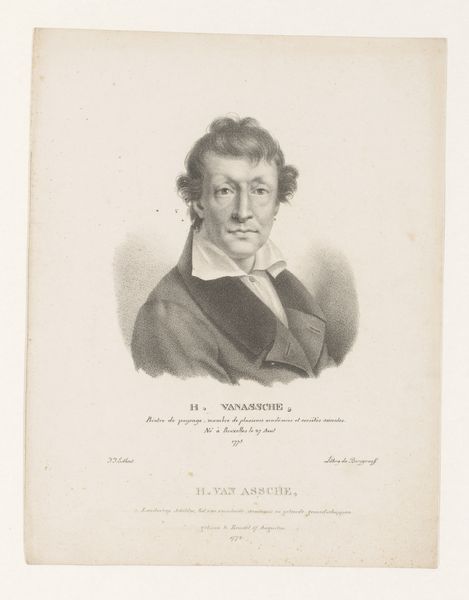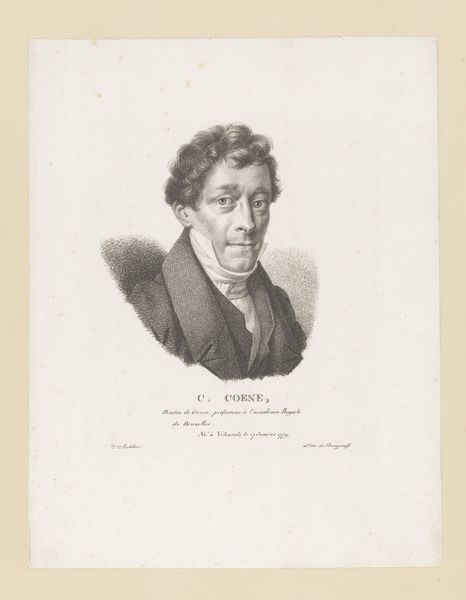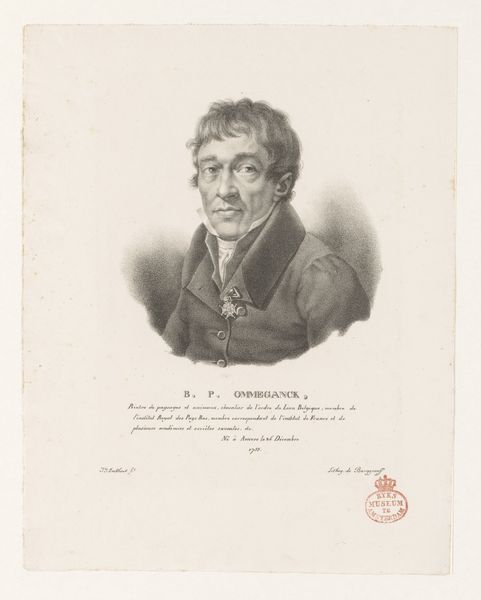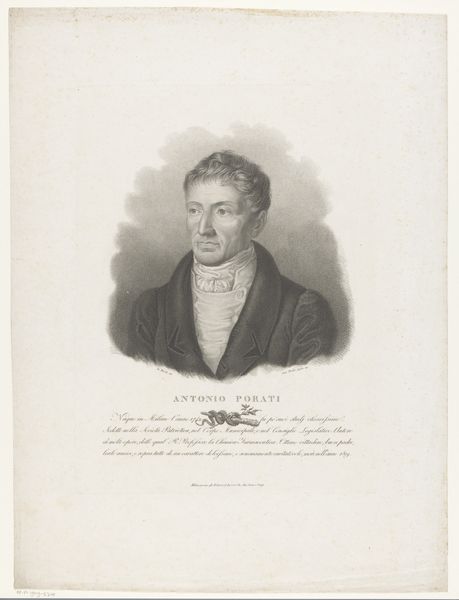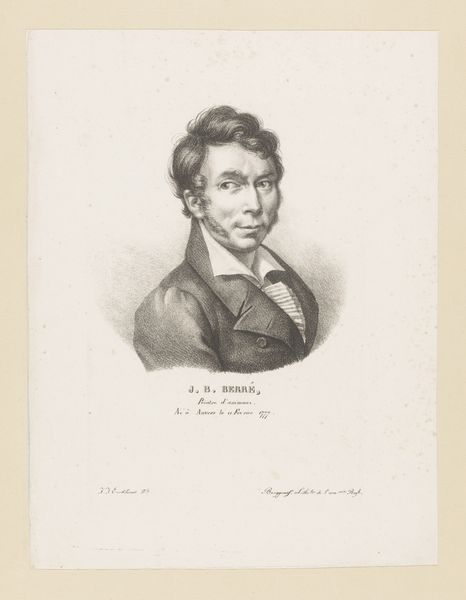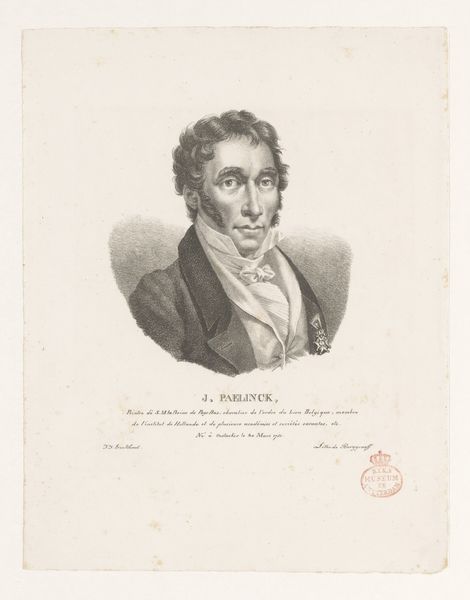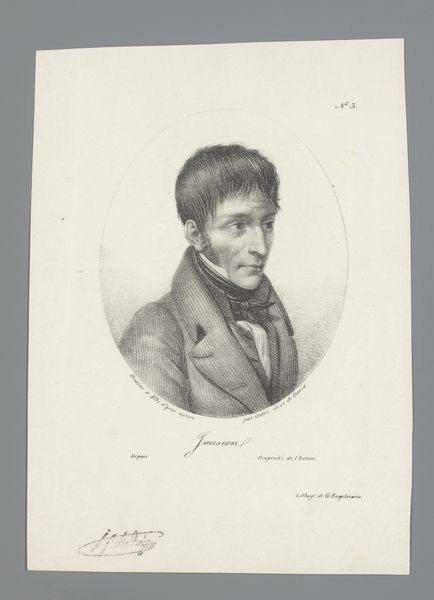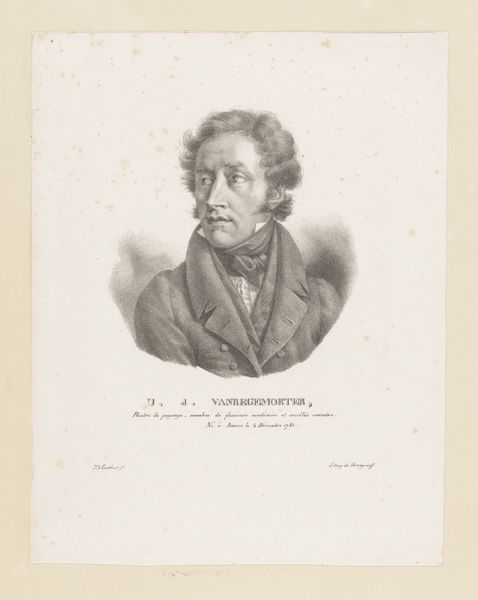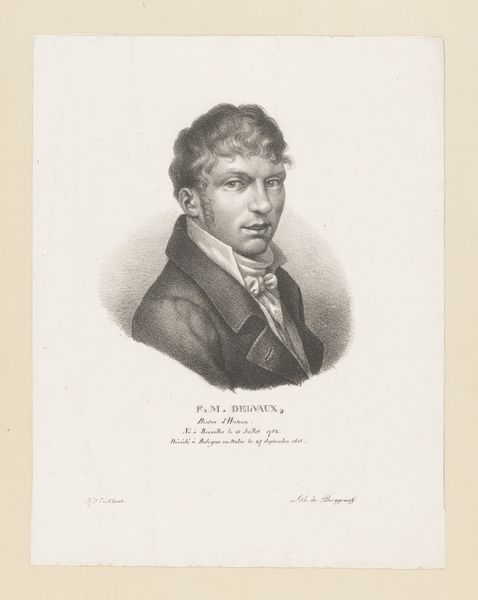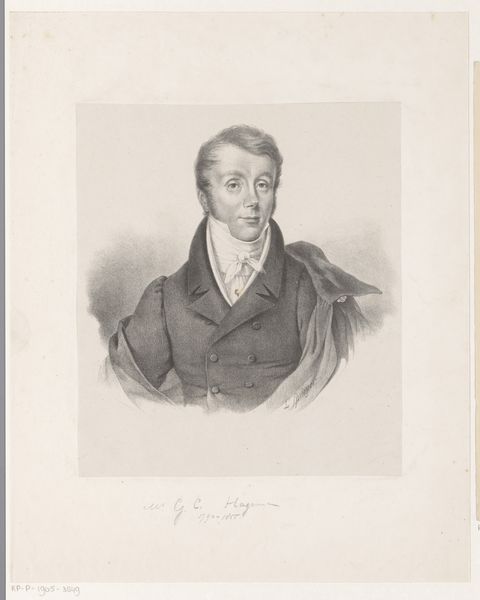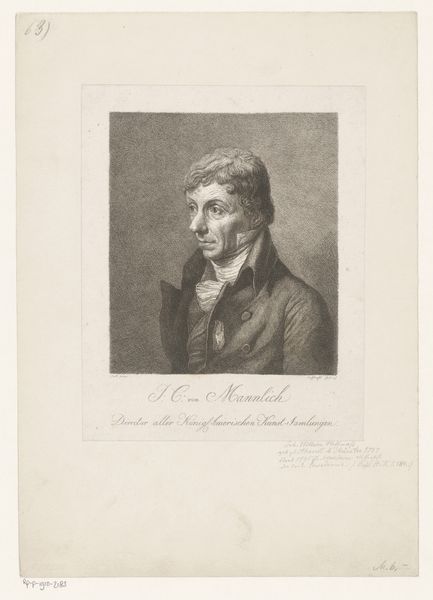
engraving
#
portrait
#
neoclacissism
#
academic-art
#
engraving
Dimensions: height 308 mm, width 238 mm
Copyright: Rijks Museum: Open Domain
Curator: The Rijksmuseum holds this intriguing engraving—a portrait of Henri van Assche by Guillaume Philidor Van den Burggraaff, dating from 1822. It really strikes me with its blend of detail and... well, a certain melancholic air. What’s your immediate impression? Editor: Austere. Efficient use of the engraving process to convey class, I guess, in the cut of his jacket. Makes you wonder what it felt like to produce portraits for the moneyed classes. Do we know who produced this? Curator: Burggraaff made it. You know, when I look at it, I wonder what was Van Assche thinking as he sat there for his portrait. Perhaps contemplating a landscape scene, which I believe was his specialty? The gaze is very direct, very intense. Editor: Mmm, landscape painting. Of course! Exploiting a totally different kind of labor in representing land as property. In terms of production and making, let’s think about the physical demands of engraving compared to Van Assche painting, for example. Both were completely embedded within a system that made artistic activity… a means of class maintenance. Curator: I see your point about artistic labour—it does tie into everything. Although, couldn't it also be about conveying personality? About capturing a likeness that speaks beyond social class? It is almost haunting, in its way, and deeply human. Look how the shadows play across his face. Editor: The person is entirely secondary. Let's zoom in on the paper. Where was it made? What type of press? Those are the crucial details, revealing a whole world of commerce and the rise of print culture! The "artist" becomes a tiny cog in a very complex and material set of relationships. Curator: So, for you, the real story is less about the sitter or the artist, but more about the physical object, and the historical and material conditions that led to its creation. I concede there's truth in your point of view; maybe we've got to balance both sides, human and material, eh? Editor: Precisely! Each brushstroke, each etching mark – an embodied transaction, a reflection of labor under particular conditions! It's the tangible reality, in this flat paper, that gets my motor going.
Comments
No comments
Be the first to comment and join the conversation on the ultimate creative platform.
